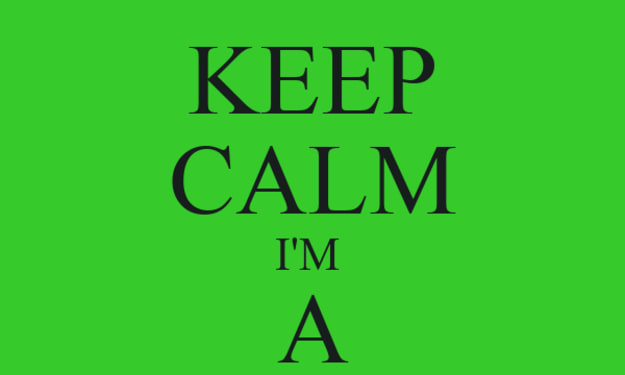2020: A Most Violent Year
The Next Cycle of NYC Street Violence

When I grew up in the 1990s in New York City, the AIDS and Crack epidemics took over the five boroughs. I often remember hearing gunshots, police, and ambulance sirens flood the neighborhood.
At the height of this era in 1990, 2,245 people died in the five boroughs. David Dinkins, the city's first and only black mayor, started the "Safe Streets, Safe City" policy. Mr. Dinkins's main intention was to end the rise in street crime.
New York City had the most murders in its long history. I remember not playing on certain blocks in Fort Greene projects because of the fear of violence. Street legends such as Killer Ben, Pop, Fifty Cent, Supreme, and Fat Cat became household names. Due to their wild experiences moving around the city streets.
After defeating Dinkins in the 1993 Mayoral election. The Giuliani administration began using strict policies, including stop & frisk, to curb violence.
Despite their limited success, New York City became less violent. Cities like Washington d.c., New Orleans, Baltimore, and Chicago increased in violence. For a long time, New Yorkers avoided the gang culture that swept through Los Angeles and Chicago.
New York had a history of crews consisting of family members or close friends who grew up together. Like gangs, but the key difference is that gangs develop a culture, a mentality of the greater group. Thus, passing their beliefs to the next generation.
Most crews ended after the death of the leader or the group's incarceration. The Supreme Team, Young Gunz, and Decepticons have respect but no power in the streets. That was the typical group pattern for many decades.
Now, those days seem like a hundred years ago.
With the decline of these crews began the rise of well-known street gangs such as Bloods and Crips. The steady transition from crews to gangs started in jails and spread to the streets. Stronghold areas for each side started to form in various locations in New York City.
The continuous street battles between the hated rivals. Allowed two of Chicago's most notorious gangs. The Gangster Disciples and Black Disciples to gain entry in New York City. The addition of these two infamous groups leads to further violence.
Many gang members began to form unlikely alliances between Bloods, Crips, GD's & BD's. By 2020, the explosion of drill rap music and traditional gang culture's growth took a firm hold in the Big Apple.
The Woo's (We On Our Own) consists of Blood and Crip members. The gang has gained fame worldwide due to the late rapper Pop Smoke's brief success. Pop Smoke died in Los Angeles on February 19, 2020, from gunshot wounds. The young rapper, whose hit songs included "Welcome to the Party" & "Dior." Pop Smoke popularized his Woo gang to the masses through his songs and videos.
Their primary rivals the Choo's, which boasts rappers like CoachDaGhost & 22Gz. Neither artist has reached the success level of Pop Smoke. Yet, both rappers have gained fame in the drill rap scene.
In early 2020, The COVID-19 pandemic caused the shutdown of criminal courts. It also lead to creating new bail reform laws and police officers' work reduction rates. Along with the release of thousands of incarcerated people back on the city streets.
The war between the Woo's and Choo's, exploded, particularly in Brooklyn. There were nearly 500 shootings in the summer months. The current mayor, Bill de Blasio, and the NYPD had struggled to combat the troubling problem.
As America tackled race relations stemming from George Floyd and Breonna Taylor's deaths. Black Lives Matter protests followed by days of intense rioting in all five boroughs. The steady trend of street violence continued throughout the remaining months.
By the end of 2020, there was a 97% jump in shootings & a 45% leap in murders. The NYPD reported 94,364 felony crimes, which include 1,602 shootings and 462 murders in the city. Although, the 2020 tally is down 31% from 1990. It's still the highest number of homicides in New York City in the last fourteen years.
As a lifelong New Yorker who's an experience both of these vicious cycles of violence. I can notice the similarities of young people seeking belonging, acceptance, and respect. The desperation of living in a low-income area with few work opportunities. The lack of government programs to assist these individuals in changing their lives.
Yet, I also see the differences. Particularly how the impact of the COVID-19 pandemic dwarfs the crack epidemic. We all notice how the"soldiers" out there now commit crimes for respect or "clout." Their need for constant attention is greater than in the prior era.
A more shocking aspect of today's era is the open disrespect of dead rivals on social media and in rap songs & videos. These different aspects of this cycle are unique and troubling to bear witness.
As we move further into 2021, I felt that we should reflect on the long-term effects of the past year's violence. As Brooklyn rapper Ransom said, "A most violent year, violent as any, but hindsight is always 2020".






Comments
There are no comments for this story
Be the first to respond and start the conversation.